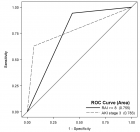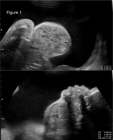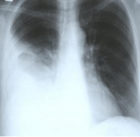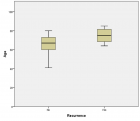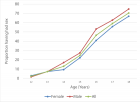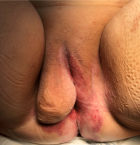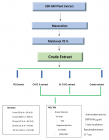About Oregon Health & Science University
Oregon Health & Science University
Articles by Oregon Health & Science University
First trimester growth delay: An early marker of triploidy
Published on: 21st November, 2019
OCLC Number/Unique Identifier: 8444362890
Triploidy is one the most common chromosomal abnormality in humans, complicating about 1% of all human pregnancies. Most affected conceptions undergo spontaneous abortion in the first trimester, making the prevalence of second trimester triploidy low. Viable triploidy is associated with high rates of maternal morbidity, including hypertensive disorders, hemorrhage, and persistent trophoblasic disease, as well as fetal and neonatal severe adverse outcomes. Given these complications, early identification of triploidy in ongoing pregnancies may inform patient counseling and management.
Equine Anti-Thymocyte Globulin (ATGAM) administration in patient with previous rabbit Anti-Thymocyte Globulin (Thymoglobulin) induced serum sickness: A case report
Published on: 23rd March, 2018
OCLC Number/Unique Identifier: 7666273824
Thymoglobulin is a rabbit-derived anti-thymocyte antibody directed at T-cells and commonly used for induction immunosuppression therapy in solid organ transplantation, especially in immunologically high risk kidney transplant recipients. Despite its frequent use and efficacy, the heterologous makeup of thymoglobulin can induce the immune system resulting in serum sickness which typically presents with rash, fever, fatigue, and poly-arthralgia in the weeks following drug exposure. ATGAM is another anti-thymocyte antibody, targeting the same epitopes, but differs from thymoglobulin by the animal in which the preparations are generated (equine vs. rabbit). Herein, we present a case of a patient with a known history of thymoglobulin-induced serum sickness, who presented with evidence of acute cellular and vascular rejection at their 12-month post-operative visit. Given their immunologically high risk status, they were successfully treated with ATGAM with improvement in their rejection and kidney function. To the author’s knowledge, this is the first case report of successful administration of ATGAM in a patient with a documented history of thymoglobulin induced serum sickness, demonstrating a possible treatment option for acute rejection in patients with reactions to thymoglobulin.
A case report of Hypocomplementemic urticarial vasculitic syndrome presenting with Renal failure
Published on: 12th September, 2018
OCLC Number/Unique Identifier: 7856112439
We present a case of hypocomplementemic urticarial vasculitic syndrome (HUVS) who developed severe renal failure requiring ICU-level care. Our patient is a 66-year-old man who presented with abdominal pain, rash, confusion, oliguria, and shortness of breath. He was found to be in acute renal failure with leukocytosis and elevated lactate. Work-up for infectious, autoimmune, and hematologic malignant diseases was negative. The presence of chronic urticaria, abdominal pain, hypocomplementemia, and leukocytoclastic vasculitis on skin biopsy confirmed the diagnosis of HUVS. He required hemodialysis for renal failure as well as gastrostomy tube placement for nutritional support secondary to the development of mucosal ulcers, a rare finding in HUVS. He recovered with several months of high-dose steroids and hemodialysis. This case highlights the effectiveness of steroids for initial treatment of HUVS, and the relapsing and remitting nature of the disease. Providers should also be aware of the broad range of presenting symptoms such as mucosal lesions that may require nutritional support. Interestingly, unlike many previously reported cases of HUVS, our patient had not yet developed signs and symptoms of systemic lupus erythematosus, which often overlaps with HUVS.
Hypocomplementemic interstitial nephritis with long-term follow-up
Published on: 22nd February, 2019
OCLC Number/Unique Identifier: 8022180414
Prednisone-sensitive hypocomplementemia, renal insufficiency, and kidney biopsy demonstrating severe tubulointerstitial nephritis (TIN), storiform fibrosis, and tubulointerstitial immune deposits are typical of IgG4-related tubulointerstitial nephritis and hypocomplementemic interstitial nephritis. A diagnosis of hypocomplementemic interstitial nephritis requires clinical and pathologic exclusion of IgG4-related tubulointerstitial nephritis. We describe a patient with hypocomplementemic interstitial nephritis who did not develop diagnostic features of IgG4 related disease (RD) over 2-year follow-up. We conclude that hypocomplementemic interstitial nephritis could be on a biologic spectrum with IgG4-related disease, but not all cases will develop the abundance of IgG4-positive plasma cells, systemic manifestations, or elevated immunoglobulin levels characteristic of IgG4-RD.

HSPI: We're glad you're here. Please click "create a new Query" if you are a new visitor to our website and need further information from us.
If you are already a member of our network and need to keep track of any developments regarding a question you have already submitted, click "take me to my Query."






